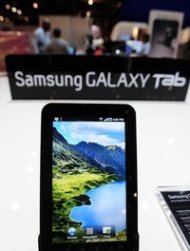Forbes has viewed listings on the job networking site LinkedIn that indicate Apple is seeking field test engineers with expertise in LTE. (A copy of the full ad is posted, in full, below.) Field testing in the wireless industry typically means taking a new cellphone outdoors (“into the field”) and measuring its signal strength. It is an integral step that phone makers take before releasing products to the public.
The LinkedIn ad, which was either posted on August 17 or 18, says the recruits, who will work with Apple’s “iOS Quality team” as “QA” (Quality Assurance) engineers, will “join a dynamic team responsible for qualifying all of the latest iPhone products.” The ad, which was posted by a California-based Apple senior recruiter, goes on to say that the engineers’ focus will be “testing the telephony (phone, sms, data, etc) functionality of the iPhone.”
Such a listing indicates that Apple not only has an LTE iPhone in the works, but one that is close enough to completion for real-world testing. Apple’s next iPhone is widely believed to be debuting in the next few weeks, most likely late September or early October.
The announcement bolsters an August 15 report from the tech news site Boy Genius Report that cellphone carriers are currently testing iPhones with LTE capabilities. Generally, both carriers and device makers analyze the connectivity properties of new devices to ensure that any network problems are resolved by launch time.
A day later, the tech news site Engadget reported that AT&T, one of Apple’s carrier partners, has been installing LTE network equipment in Apple stores. The assumption is that the LTE equipment will enable consumers to try out LTE connection speeds in-store. It’s a scenario that only makes sense if Apple plans to introduce an LTE-capable device, such as an iPhone.
Apple’s decision to include LTE in at least one version of its upcoming iPhone is significant for several reasons. First, it is a validation of the appeal of LTE/4G, which is still a new technology. Verizon Wireless, the first large U.S. operator to adopt LTE, said yesterday that its LTE network is now accessible to more than 160 million Americans or more than half of the U.S. population. Other big U.S. carriers are much further behind, however. AT&T will deploy LTE sometime this summer but has not yet started. T-Mobile USA does not have an LTE network, mostly for technical and business reasons. Sprint Nextel has a 4G network that utilizes a different technology called WiMax and is believed to be planning a switch to LTE, but has not yet confirmed the move.
Of course, the LTE iPhone may not be targeted solely at the U.S. The job ad said most of the positions would be based at Apple's Cupertino, Calif. headquarters but that the company also had field test engineer openings in Germany, France and Japan. All of those countries are iPhone markets. In Germany and France, the iPhone is carried by multiple operators. In Japan, it is offered by Softbank.
The existence of an LTE iPhone is also important because it implies that compatible chipsets are ready. Since LTE is so new, most chipmakers are still creating silicon for it. In particular, chips that can support both LTE and HSPA, an older, 3G technology, are believed to still be in development and not available until the end of the year.
Compatibility with both 3G and 4G would be critical to the release of an LTE iPhone since LTE networks in the U.S. don’t yet offer nationwide coverage. Previous LTE phones have addressed this problem by incorporating two chips, one for 3G and one for 4G, but the setup tends to make the devices thicker, heavier and less battery efficient than an integrated chip would.There are plenty of other reasons why people have doubted Apple will include LTE in its next iPhone, including the higher cost of LTE-compatible components. Apple itself has said that existing LTE chipsets are not up to its famously exacting standards. In an April 2011 call with analysts, Apple’s Chief Operating Officer, Peter Oppenheimer, said that early LTE chips “forced a lot of design compromises with the handset” – compromises that Apple was “just not willing to make.”
It’s possible, however, that LTE chips have improved dramatically in the past few months, especially at chip giant Qualcomm, which is believed to be collaborating with Apple on its new devices.
It’s also true that Apple needs something that will wow consumers in order to match the thrill of its previous device launches. Apple is known for pursuing less versus more when it comes to iPhone features, carefully selecting the services and functions it believes will be most useful and delightful to its customers. Its past iPhones have improved on prior generations in terms of speed. An LTE iPhone would keep that streak going.
source: http://news.yahoo.com/more-lte-iphone-evidence-apple-seeking-engineers-lte-174723917.html;_ylt=AlkfiC1q1nD4xuAmZwEF9p0xVrIF;_ylu=X3oDMTM1MHAyMjMxBHBrZwM3NDY0MjNiMi01OGIyLTMxMjAtOWNmOS03MjJkZTczZDMwZjkEcG9zAzEEc2VjA3RvcF9zdG9yeQR2ZXIDM2UwYTdjM2EtYzljMy0xMWUwLThjYzQtMzcxZmNjYTIxZDli;_ylg=X3oDMTI4MXA4bGVjBGludGwDdXMEbGFuZwNlbi11cwRwc3RhaWQDBHBzdGNhdAN0ZWNofGFwcGxlLW1hY2ludG9zaARwdANzZWN0aW9ucwR0ZXN0Aw--;_ylv=3

Tidak ada komentar:
Posting Komentar